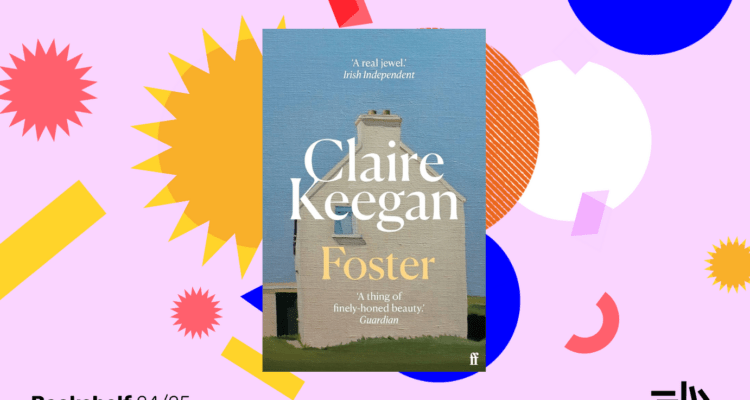Get Into Reading Group Diary: The Rescue Man by Anthony Quinn
By Clare Williams, Get Into Reading Project Worker
We began reading The Rescue Man in June and are currently just over one third of the way into this impressive first novel by Anthony Quinn. Reactions from the group have been mixed although all are agreed that the book is certainly rich in thought provoking material to give plenty of food for thought! The general consensus at present seems to be that group members are very interested in the book in terms of the ideas it offers for discussion, but don’t quite like it as a novel in terms of those fundamental basics of character and plot. This in itself however has generated interesting debates about what we as readers want out of a novel, and especially what we want out of a novel to be read in one of our weekly GIR groups. Whilst one group member has criticised the book for being ‘too slow’, saying that they’d ‘like more to be happening – more characters, like we had in Great Expectations’, others have responded with the caution that ‘it’s no use jumping straight into it – you need to get to know the people’s characters first.’
So far we have been learning about the story of a rambling historian called Tom Baines, who appears somewhat cut adrift from life, unable or unwilling to live in the present and embrace its glorious randomness with all of its human characters and unpredictable events. Baines, an orphan with an unwavering attachment to his native city of Liverpool, is a man who fears commitment, whether that mean commitment to people – in one scene he falls into a self-deprecating fit of anxiety and remorse when a girl called Brenda invites him to a party – or a commitment to his profession. His love of architecture is a clue to his need for solid structures, permanent anchors in life and yet with the onset of the Second World War even this ostensibly stable crutch appears to be disappearing from his grasp. One other thing we have learnt about Baines is that he is a man who is plagued with the guilt of a brooding secret – blaming himself for the suicide of Alice Thorn, a girl who Baines once had a great affection for but who fell under the influence of a careless lover Duncan Heathcote. This past seems to only exacerbate his need for caution and tendency towards indecision.
As a group we have felt that a change needs to happen to Tom Baines for him to make a change within himself and his way of looking at life – indeed, for the story of the book itself to move and grow. That change appears to be being opened up in the novel, firstly in his meeting of two fellow enthusiasts Richard Tanqueray and his socialist wife Bella and secondly with the outbreak of war, which forces him into a position of action rather than what for Baines has become a rather dilapidating cycle of thought. This outlet for action comes in the form of Baines joining The Rescue Men. Maybe now things will begin to change for Baines and also pick up the pace of the novel which is the thing that seems to be wanted be some of our group members. It may also come to him in his reading of the diary of Peter Eames, a Victorian architect – indeed one group member feels that the diary might actually provide Baines with the ‘key’ that he seems to be looking for to make sense of his own life.
The book is set in Liverpool and as local readers we are all in agreement that it is meticulous in its recreation of the architecture and moreover mood of the city during the 1940’s. We have all been fascinated by the author’s descriptions of local buildings and streets and feel that we have gained a greater appreciation into what makes up a history of a building, a city. The book itself is infused throughout with a kind of mystical reverence for the past and the ghosts of lives which once inhabited the familiar buildings which many of us continue to pass each day. The book’s inclusion of Peter Eame’s diary only adds to this sense of mystery, enriching the novel with revolutionary ideas about art and life as forwarded by the likes of John Ruskin. Indeed, the book is rich in all kinds of literary allusions – including ones to Great Expectations – but yet again we are talking about ideas here rather than characters, and while ideas are all very interesting, the group is still waiting to be gripped by the characters in the book and the unfolding of their life stories by which as we readers are still waiting to be gripped. Ironically the author has put its readers perhaps too closely into the mindset of its central character Tom Baines - we are now ourselves waiting to see how the novel will unfold, waiting ourselves for the tide that another Liverpool writer, that other great Victorian poet Arthur Hugh Clough, referred to as ‘the tide in the love affair of mortals’ which must be taken at full flood if it is to be assuredly taken at all. However, as Clough also recognised and we have seen Tom Baines experiencing, this is easier said than done and it is perhaps the case that Quinn is challenging our desires as readers to make us appreciate and sympathise with Baines or even Peter Eames as another human being by making us vicariously living through the confusions and complications and procrastinations of their lives. We shall see!
Share
Related Articles

December’s Stories and Poems
The Reader Bookshelf theme of ‘Wonder’ might make many of us think of the very special kind of wonder which…

December’s Choice From The Reader Bookshelf
The Reader Bookshelf is a carefully curated collection of literature for adults and children, exploring a different theme each year, this year’s…

November’s Stories and Poems
This month, we are turning our focus to a major part of The Reader’s in Criminal Justice settings. For 15…


